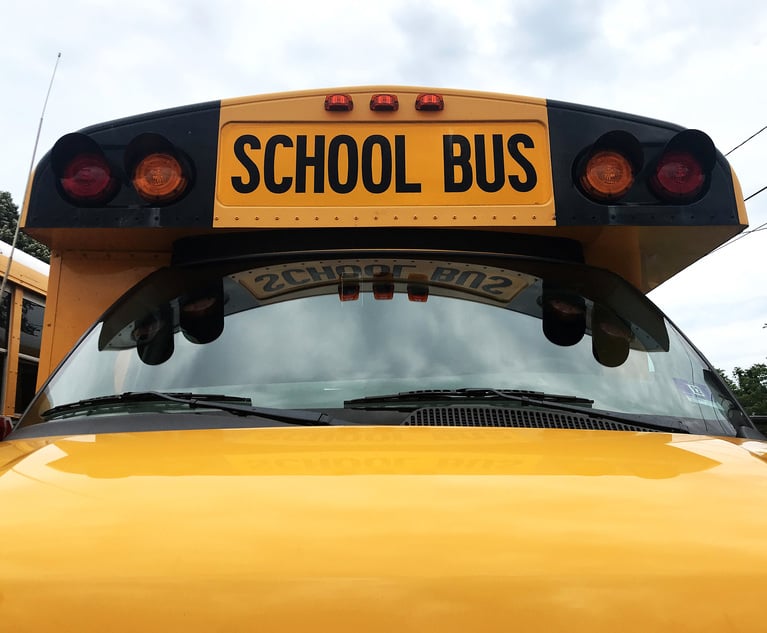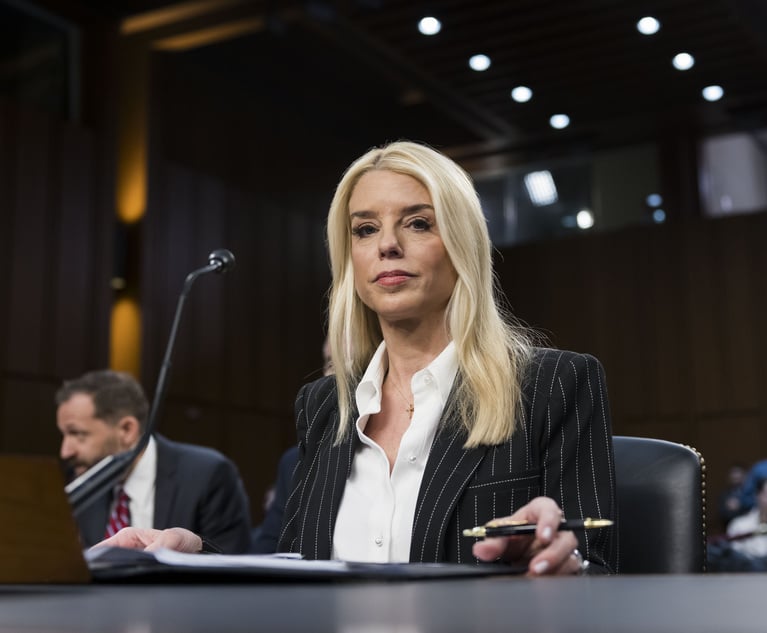Thomas Calls the Second Amendment a 'Constitutional Orphan.' Stevens Now Says Get Rid of It.
"The demonstrators should seek more effective and more lasting reform,” Stevens said in a New York Times op-ed. “They should demand a repeal of the Second Amendment.” At the high court, the justices have shown no strong appetite to dive into the Second Amendment in recent years.
March 27, 2018 at 02:53 PM
5 minute read
 Retired Supreme Court Associate Justice John Paul Stevens in May 2016. (Photo: Don Pollard)
Retired Supreme Court Associate Justice John Paul Stevens in May 2016. (Photo: Don Pollard) Four years ago in his book suggesting six amendments to the Constitution, retired Justice John Paul Stevens urged restricting the Second Amendment right to keep and bear arms to service in a militia. Now, in the wake of the Parkland high school shootings and nationwide student demonstrations against gun violence, Stevens is calling for repeal.
The student-led demonstrations on March 24 revealed broad public support for legislation to minimize the risk of mass shootings, Stevens wrote in an opinion column in The New York Times on Tuesday.
“But the demonstrators should seek more effective and more lasting reform,” Stevens said. “They should demand a repeal of the Second Amendment.”
That demand obviously would not sit well with Justice Clarence Thomas, who has been highly critical of his colleagues' reluctance to revisit the Second Amendment since their landmark individual right ruling in 2008. Thomas, who has called the amendment a “constitutional orphan” and a “disfavored right” in the Supreme Court, wants to breathe new life into it, not kill it.
It didn't take long for the National Rifle Association to sound an alarm after Stevens' call for repeal. The NRA's Chris Cox, in a statement, said: “The 97-year-old retired justice has long held the opinion that American citizens do not have the individual right to own a firearm for self-protection. Emboldened by the mainstream media, the gun-control lobby is no longer distancing themselves from the radical idea of repealing the Second Amendment and banning all firearms.”
In his 46-page dissent in the U.S. Supreme Court's 2008 landmark Second Amendment decision, Stevens, who turns 98 on April 20, left no doubt that he believed the Second Amendment—properly interpreted—was limited to service in a militia. The concern underlying adoption of the amendment, he insisted, was that a national standing army could threaten the security of the states.
“Today that concern is a relic of the 18th century,” Stevens wrote in his Times column.
The Supreme Court's 5-4 decision in District of Columbia v. Heller—the late Justice Antonin Scalia wrote the 64-page majority opinion—upended the long-settled understanding of the amendment, according to Stevens.
“Overturning that decision via a constitutional amendment to get rid of the Second Amendment would be simple and would do more to weaken the N.R.A.'s ability to stymie legislative debate and block constructive gun control legislation than any other available option,” he wrote in his column.
The call for repeal appears to reflect an evolution in Stevens' views on how to address the Second Amendment issue—from fix it to repeal. In his 2014 book, he suggested a constitutional amendment that said the following:
A well regulated Militia, being necessary to the security of a free State, the right of the people to keep and bear Arms when serving in the Militia shall not be infringed.
Since the justices' much-debated 2008 decision, the court has rebuffed a number of opportunities to step back into the Second Amendment arena and issues surrounding the regulation of guns. Federal courts examining some of those issues generally have upheld local regulations under the Heller decision.
 U.S. Supreme Court Justice Clarence Thomas. (Photo: Diego M. Radzinschi / ALM)
U.S. Supreme Court Justice Clarence Thomas. (Photo: Diego M. Radzinschi / ALM) The justices on Feb. 20 declined to review a challenge to California's 10-day waiting period for the purchase of firearms. Justice Clarence Thomas wrote a blistering dissent in which he accused his colleagues of making the right to keep and bear arms “a constitutional orphan.”
The high court, Thomas wrote, had not heard argument in a Second Amendment case in nearly eight years and had not clarified the standard for reviewing gun regulations for almost 10 years.
“But as evidenced by our continued inaction in this area, the Second Amendment is a disfavored right in this court,” he concluded. At various times, Thomas has been joined in his criticism of the court in this area by Scalia and Justices Samuel Alito Jr. and Neil Gorsuch.
Repealing the Second Amendment would require amending the Constitution—a difficult task in general, and perhaps impossible with regard to the Second Amendment because of the deep-seated feelings about it and the influence of the NRA.
Four years ago, Scalia, in a conversation at the National Press Club in Washington, said he would not want a constitutional convention for any reason. “Whoa! Who knows what would come out of it?” he told the moderator.
But if he could amend the Constitution, Scalia said, he would amend it to make it easier to amend. He explained that he once calculated what percentage of the population could prevent an amendment to the Constitution and found it was less than 2 percent.
“It ought to be hard, but not that hard,” said Scalia, a nemesis to Stevens on the Second Amendment.
Read more:
Clarence Thomas, in Dissent, Asserts Gun Rights Aren't 'Favored' at High Court
John Paul Stevens, Lifelong Cubs Fan, on Staying Up Late for 'Wildest' Game
Retired Justice Stevens Praises Roberts, Jabs Scalia
Scalia, Ginsburg Offer Amendments to the Constitution
Stevens Takes Swing at Baseball Antitrust Exemption
Justices, Shying From Second Amendment, Won't Touch California's Gun Restrictions
This content has been archived. It is available through our partners, LexisNexis® and Bloomberg Law.
To view this content, please continue to their sites.
Not a Lexis Subscriber?
Subscribe Now
Not a Bloomberg Law Subscriber?
Subscribe Now
NOT FOR REPRINT
© 2025 ALM Global, LLC, All Rights Reserved. Request academic re-use from www.copyright.com. All other uses, submit a request to [email protected]. For more information visit Asset & Logo Licensing.
You Might Like
View All
FTC Sues PepsiCo for Alleged Price Break to Big-Box Retailer, Incurs Holyoak's Wrath
5 minute read
Supreme Court Will Hear Religious Parents' Bid to Opt Out of LGBTQ-Themed School Books

Wells Fargo and Bank of America Agree to Pay Combined $60 Million to Settle SEC Probe
Trending Stories
Who Got The Work
J. Brugh Lower of Gibbons has entered an appearance for industrial equipment supplier Devco Corporation in a pending trademark infringement lawsuit. The suit, accusing the defendant of selling knock-off Graco products, was filed Dec. 18 in New Jersey District Court by Rivkin Radler on behalf of Graco Inc. and Graco Minnesota. The case, assigned to U.S. District Judge Zahid N. Quraishi, is 3:24-cv-11294, Graco Inc. et al v. Devco Corporation.
Who Got The Work
Rebecca Maller-Stein and Kent A. Yalowitz of Arnold & Porter Kaye Scholer have entered their appearances for Hanaco Venture Capital and its executives, Lior Prosor and David Frankel, in a pending securities lawsuit. The action, filed on Dec. 24 in New York Southern District Court by Zell, Aron & Co. on behalf of Goldeneye Advisors, accuses the defendants of negligently and fraudulently managing the plaintiff's $1 million investment. The case, assigned to U.S. District Judge Vernon S. Broderick, is 1:24-cv-09918, Goldeneye Advisors, LLC v. Hanaco Venture Capital, Ltd. et al.
Who Got The Work
Attorneys from A&O Shearman has stepped in as defense counsel for Toronto-Dominion Bank and other defendants in a pending securities class action. The suit, filed Dec. 11 in New York Southern District Court by Bleichmar Fonti & Auld, accuses the defendants of concealing the bank's 'pervasive' deficiencies in regards to its compliance with the Bank Secrecy Act and the quality of its anti-money laundering controls. The case, assigned to U.S. District Judge Arun Subramanian, is 1:24-cv-09445, Gonzalez v. The Toronto-Dominion Bank et al.
Who Got The Work
Crown Castle International, a Pennsylvania company providing shared communications infrastructure, has turned to Luke D. Wolf of Gordon Rees Scully Mansukhani to fend off a pending breach-of-contract lawsuit. The court action, filed Nov. 25 in Michigan Eastern District Court by Hooper Hathaway PC on behalf of The Town Residences LLC, accuses Crown Castle of failing to transfer approximately $30,000 in utility payments from T-Mobile in breach of a roof-top lease and assignment agreement. The case, assigned to U.S. District Judge Susan K. Declercq, is 2:24-cv-13131, The Town Residences LLC v. T-Mobile US, Inc. et al.
Who Got The Work
Wilfred P. Coronato and Daniel M. Schwartz of McCarter & English have stepped in as defense counsel to Electrolux Home Products Inc. in a pending product liability lawsuit. The court action, filed Nov. 26 in New York Eastern District Court by Poulos Lopiccolo PC and Nagel Rice LLP on behalf of David Stern, alleges that the defendant's refrigerators’ drawers and shelving repeatedly break and fall apart within months after purchase. The case, assigned to U.S. District Judge Joan M. Azrack, is 2:24-cv-08204, Stern v. Electrolux Home Products, Inc.
Featured Firms
Law Offices of Gary Martin Hays & Associates, P.C.
(470) 294-1674
Law Offices of Mark E. Salomone
(857) 444-6468
Smith & Hassler
(713) 739-1250











